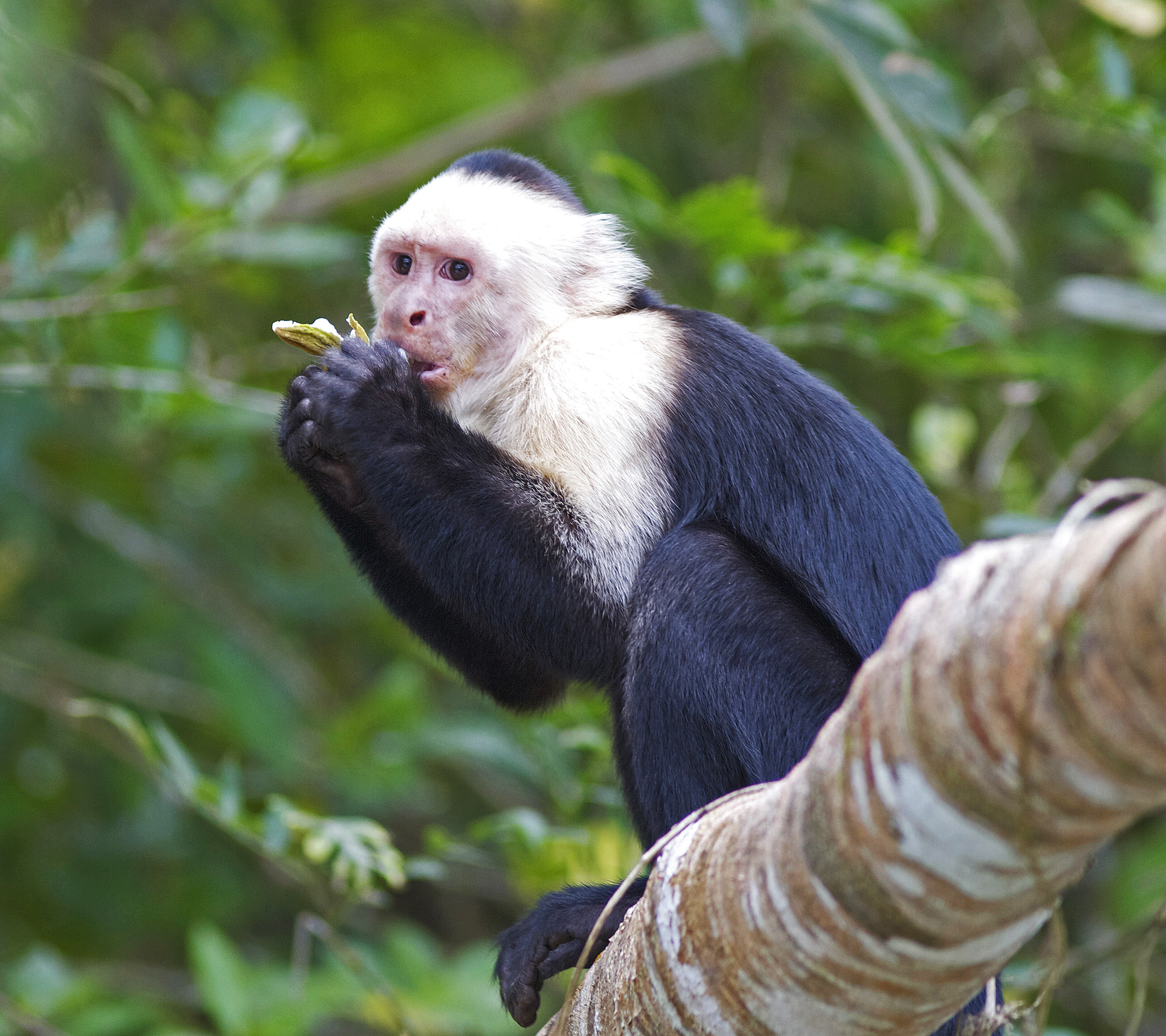If you missed the live Twitter broadcast of the final round, here it is: the conclusion of Anole March Madness 2016. In the final round, Anolis equestris represented the island anoles and Anolis frenatus represented the mainland anoles to answer the question every anole biologist ponders: are island anoles or mainland anoles superior?
Without any further ado, here’s the final match!
Winner match 29 (Anolis frenatus) versus winner match 30 (Anolis equestris)
In the sun-dappled canopy of Columbia a giant sits and waits. It has been nearly effortless for Anolis frenatus to maintain his dominance so far. Anolis equestris, fresh off a shipment of tropical plants from Cuba, has decided to expand his empire into South America.

Anolis equestris, high in the canopy (photo by Corn Farmer – Flickr)
His species has successfully invaded elsewhere – Cayman Islands, the Canaries, Florida – so why shouldn’t this knight anole charge into South America? Anolis equestris makes his way into the forest canopy where he is most comfortable. He ascends to the very top and looks out over the expansive forest. As he surveys his new kingdom, he spots another large anole only 10m away. The Bridled Anole, Anolis frenatus, at 14cm SVL appears to be a worthy competitor to the giant Knight Anole, who is only 2cm larger. They immediately begin to display their dominance. The vibrant green A. frenatus with his black speckled body slowly and confidently extends his cream colored dewlap. Anolis equestris, equally vibrant in his emerald hues, extends his pink dewlap in response. Anolis equestris moves across the top of the canopy, clinging with his oversized toepads to the large leaves that form a near continuous mat so high above the forest floor. Anolis frenatus responds in kind, but descends just below the canopy. As he makes his way toward Anolis equestris it is difficult to see him from above. His green body blends in perfectly with the leaves and the black spots break up his form just enough so that at a glance one could mistake him for a leaf speckled with the shadows of the canopy. His exceptional camouflage allows him to sneak up just below Anolis equestris. Anolis frenatus thrusts through the canopy and latches onto Anolis equestris’ hindlimb, instantly breaking his tibia with the forceful bite. Anolis equestris, stunned and in pain, reels around to look for his assailant. Anolis frenatus returns to the top of the canopy and gives a second warning dewlap followed by a series of pushups.

Anolis frenatus blends in perfectly just under the sun-dappled canopy (photo by Tobias Eisenberg)
The clash of titans has begun. Anolis equestris lunges at Anolis frenatus, tearing a piece of flesh from his opponent’s shoulder as he flings him a good meter away. Anolis frenatus, well-adapted for life in the treetops, is able to regain his footing quickly and returns with a near-sprint aimed at Anolis equestris. Anolis frenatus’ attack is foiled as Anolis equestris delivers a well-calculated blow at the throat of Anolis frenatus, ripping a large hole in his dewlap. Anolis frenatus quickly dives back under the canopy and hunkers down against a branch. Anolis equestris, sprawls out his limbs and begins to dewlap in glory, announcing the arrival of a new king. Unfortunately for him, things work differently here. As many have hypothesized, in this mainland forest predation reigns, quite unlike the forests back in the islands where competition ruled. And so the glorious Knight Anole meets his end as a capuchin monkey (which Anolis frenatus had noticed and wisely avoided) leaps into the battle and grabs the giant lizard, giving him a good smack against a nearby branch before carrying him away for an afternoon snack (which probably looked something like this). Anolis frenatus, seeing the danger has passed, returns to the canopy to resume fighting only to see his opponent carried away into the Colombian sunset. ***Anolis frenatus wins***
And that officially concludes the tournament. We hope you enjoyed it and learned a few new things about these anoles! Did anyone predict a (near?) perfect bracket? Learn something new? Disagree with one of the outcomes? Let us know in the comments!
- Puerto Rico Herpetology Symposium - September 21, 2023
- Anole Symposium This Fall? - July 14, 2023
- Parallel Urban Adaptation from Phenotype to Genotype in Anolis Lizards - January 20, 2023






Skip Lazell
Well, I thought it was all great right up to this, but the notion that a mainland anole could ultimately win out over an Island species is intolerable! Of course you had to have a mammal help! And a monkey!? Next time you’ll be using repugnicans! Skip
Martha Muñoz
Hi Skip,
I figured you’d have strong opinions on the outcome! Hope all is well.
Cheers,
Martha